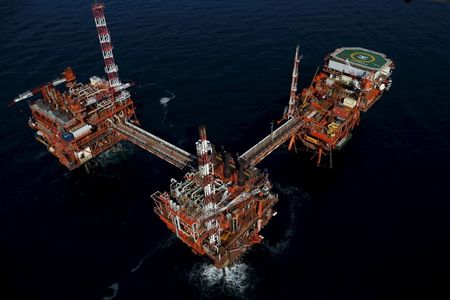
Investing.com– Oil prices fell in Asian trade on Wednesday after industry data signaled an increase in U.S. oil inventories, while focus remained on diplomacy efforts by the U.S. to quell tensions in the Middle East.
Crude prices gained some ground in the prior session after Israel said it had killed Hashem Safieddine, the heir apparent to the late Hezbollah Leader Hassan Nasarallah, who was killed last month by an Israeli strike.
U.S. Secretary of State Antony Blinken held extended discussions with Israeli leaders this week over a potential de escalation in the conflict, while also pushing for more humanitarian aid in Gaza.
Focus also remained on more economic cues from top oil importer China, amid persistent concerns over slowing demand in the country.
Brent oil futures expiring in December fell 0.4% to $75.75 a barrel, while West Texas Intermediate crude futures fell 0.4% to $71.45 a barrel by 21:00 ET (01:00 GMT).
US inventories clock bigger-than-expected build- API
Data from the American Petroleum Institute showed that U.S. oil inventories grew 1.643 million barrels in the past week, compared to expectations for a build of 0.7 mb.
The reading usually heralds a similar trend from official inventory data, which is due later on Wednesday, and spurred some concerns that U.S. fuel demand was cooling.
Oil prices were also pressured by recent strength in the dollar, as expectations of smaller interest rate cut by the Federal Reserve boosted the greenback to its strongest levels since early-August.
Oil to remain around $76/barrel in 2025- Goldman Sachs
Oil prices are expected to average around $76 a barrel in 2025, Goldman Sachs analysts said in a recent note, with markets to see a moderate crude surplus and spare capacity in major producers to offset any potential supply disruptions.
The investment bank said the risk premium for crude from tensions in the Middle East was limited, given that Iran-Israel tensions had so far not impacted oil supplies from the region.
GS analysts also noted that major producers in the Organization of Petroleum Exporting Countries and allies had sufficient spare capacity. The cartel last week cut its oil demand forecast for 2024 and 2025, and is set to begin increasing production later this year.
This post is originally published on INVESTING.






